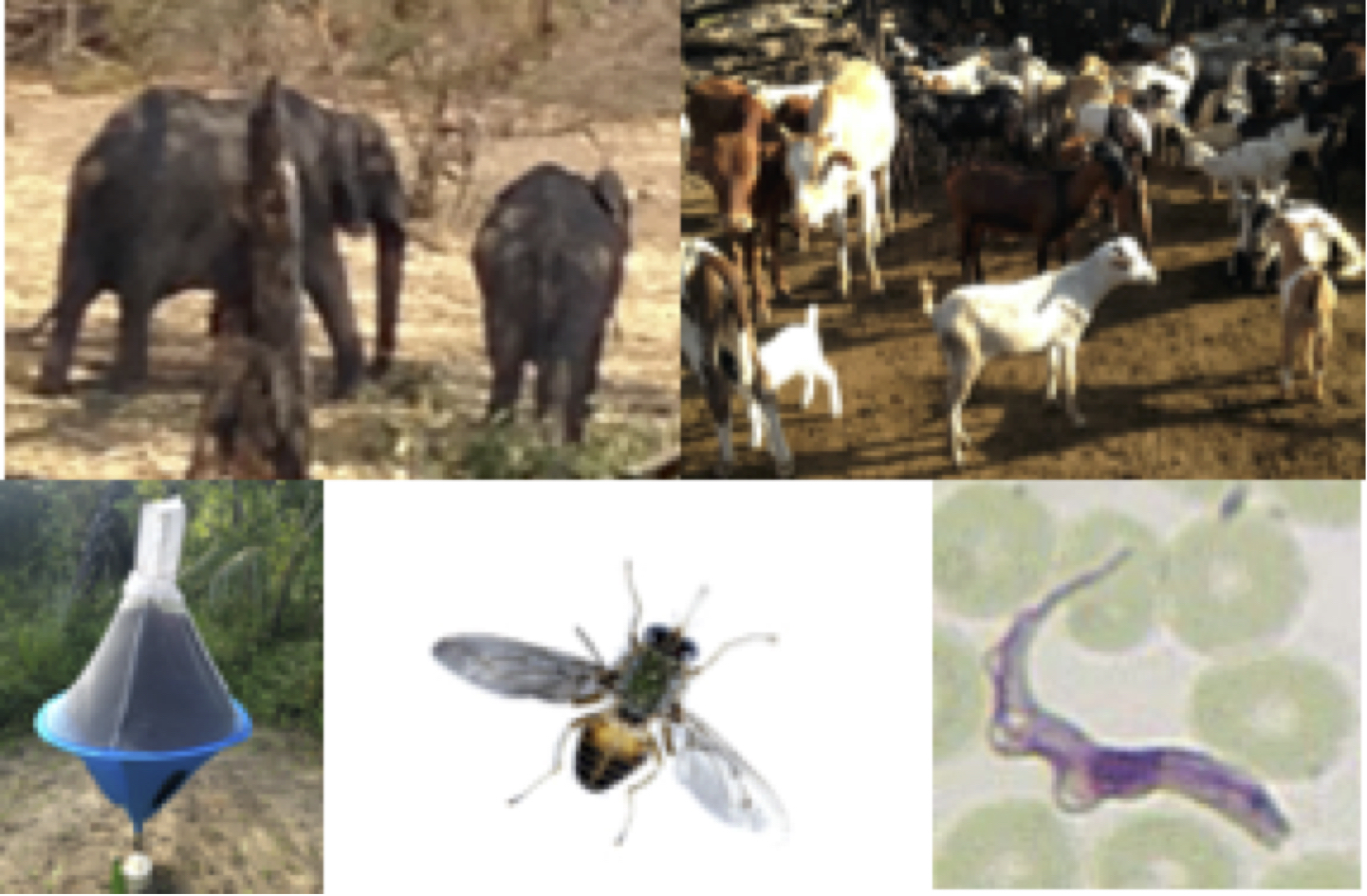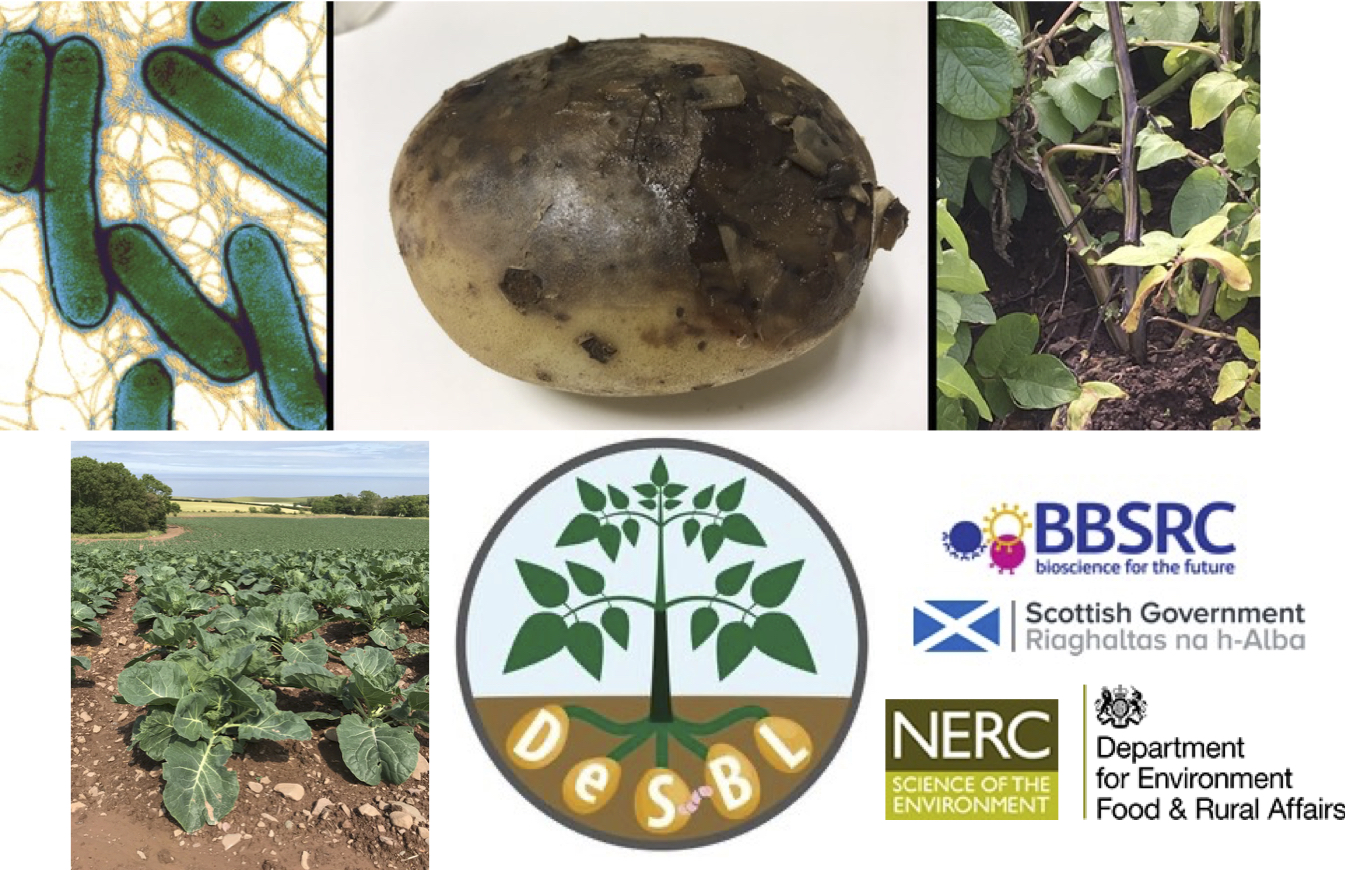Current Collaborative Research Projects
1) What can you learn from a fly? Using haemotophagous insects as noninvasive samplers. Funded by Leverhulme (2020-2023).

Core Team
PI: Barbara Mable
Co-I: Harriet Auty
PDRA: Anubhab Khan
RA: Ryan Carter
Technical support: Elizabeth Kilbride
Collaborators: Manun Channumsin (Rajamangala Univeristy of Technology, Thailand), Dan Masiga (icipe, Kenya), Umer Zeeshan Ijaz (University of Glasgow, School of Engineering)
Increasing encroachment of livestock into wildlife protected areas has altered management practices (e.g. fences, restriction of wildlife to small, carefully monitored home ranges) to reduce competition for grazing, threats posed by wildlife to crops or livestock, poaching, and disease transmission between domestic and wild hosts. However, such restriction of movement can lead to increased fragmentation and isolation, which can contribute to loss of genetic variation and extinction of small populations. Little is known about population genetic structure of wild mammals that are difficult to sample because they are dangerous (e.g. hippopotamus, African Buffalo), highly protected (e.g. rhinoceros), or elusive (e.g. African wild dogs). There is thus a need for improved non-invasive sampling methods to monitor the genetic health of wild animal populations, which can be combined with their ecology to understand the most serious threats posed to population viability. For example, tsetse flies are the main vector of trypanosomes, which cause disease in wildlife, livestock and humans. The aims of our project are to test the potential to determine whether shotgun metagenomic sequencing of tsetse fly blood meals and/or targeted sequence capture could be used not only to identify which hosts flies had fed on but to provide markers for population genomics of hosts, flies and pathogens.
2) A Decision Support tool for Potato Blackleg Disease (DeS-BL)” (funded by BBSRC, NERC, DEFRA and the Scottish government), a consortium grant in the Bacterial Plant Diseases Programme.

Core Team
PI: Ian Toth, James Hutton Institute
Glasgow Co-I’s: Barbara Mable (IBAHCM), Umer Zeeshan Ijaz (School of Engineering), Joel Milner (MCSB)
PDRA: Ciara Keating
Research Technicians: Elizabeth Kilbride, Janet Laird
Primary Glasgow Collaborator: Dan Walker (IIII)
Pectobacterium atrosepticum is one of the most economically damaging bacterial plant pathogens in the UK, causing blackleg disease of potato plants and soft rot of tubers. The ultimate aim of the DeS-BL (Building a Decision Support Tool for Potato Blackleg Disease) project is to develop an integrated suite of decision support tools for farmers, agronomists and policymakers, to facilitate management of the disease.
The research is organised into five work packages
- Understanding the role of nematode worms and insects in disease transmission
- Investigating the impact of current practices, including irrigation and crop rotation on disease establishment
- Studying the potato root microbiome, how it changes with soil conditions and the potential for biocontrol
- Using data from past outbreaks and climate change models to identify drivers of disease and develop a tool for predicting blackleg risk
- Collaborate with industry and policymakers to implement and evaluate the project findings and decision making tool
The Glasgow team is leading on work package 3 and specifically assessing: 1) the consequences of agricultural practices (e.g. irrigation, use of cover crops) on microbial diversity associated with potato roots; and 2) the identification, synthesis and testing of antimicrobial proteins for treatment/prophylaxis (i.e. bacteriocins). Hou can hear Ciara talk about the project here.
The microbial context in which pathogens interact with hosts are known to critically influence the success of an infection. Current studies on disease development often tend to focus on a pathogen in isolation, with little understanding of how they interact with microbial communities. Surveillance on these communities could revolutionise risk assessment of agricultural practices through pre-emptive rather than reactive treatments customized to particular crop situations or environments. Plant genotypes are known to influence rhizosphere microbial communities through root exudates and can also affect competition between strains or species through the production of antimicrobial peptides; e.g. bacteriocins. However, effects on virulence and distribution of pathogenic bacteria in crops remains largely unknown. Using soil and rhizosphere samples from field trials conducted at the James Hutton Institute and the National Institute for Agricultural Botany (NIAB), we are using deep sequencing of amplicons (16S gene) to assess how irrigation practices, nematode control measures, and cover crops influence bacterial communities associated with potato roots, with a particular focus on prevalence of Pectobacterium or related taxa.
Nearly all bacteria produce bacteriocins, proteinaceous antibiotics that kill closely related species, allowing the producer to thrive in its respective niche, often regulating species/strain diversity within the rhizosphere. We have proof-of-concept for Pseudomonas syringae (Ps) pathovars that bacteriocins can be exploited for plant protection against infection not only by transgenic expression in planta but crucially by direct treatment of seed. The objectives of this component of the DeS-BL study (led by Joel Milner) will be to identify bacteriocins from closely related species capable of killing Pba, to purify them and apply them either directly or via the producing strain as a seed tuber treatment.

